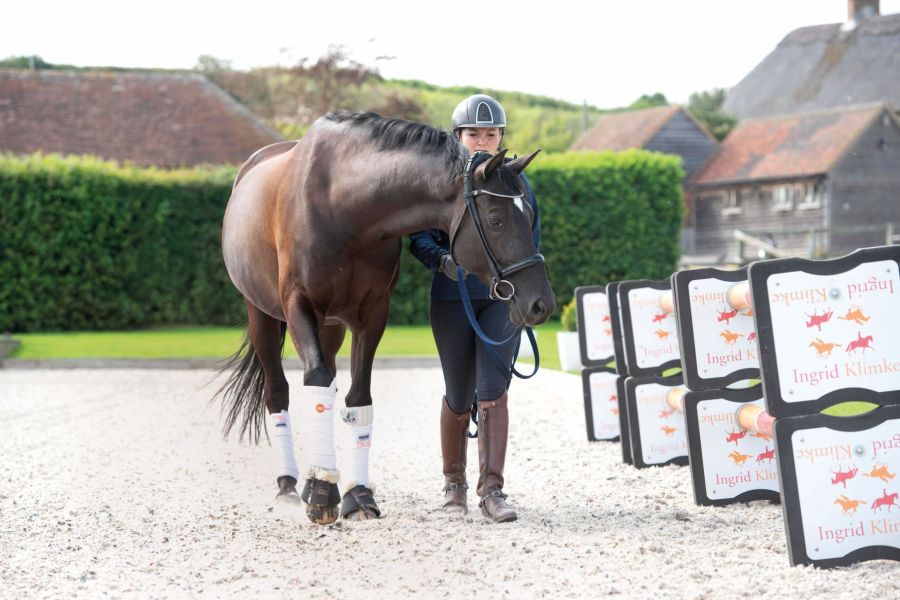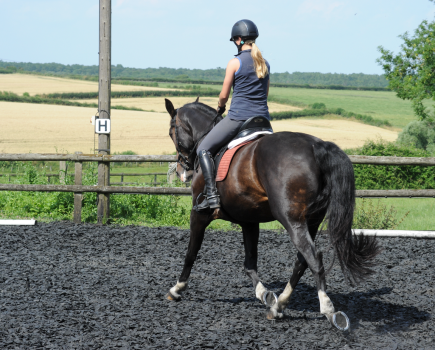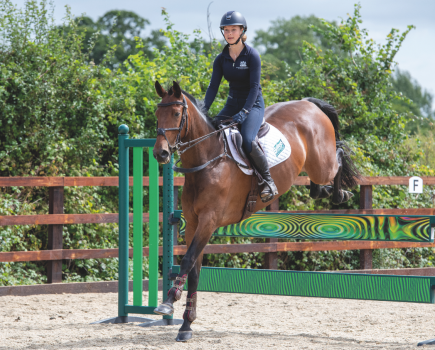Good groundwork is key to a successful and happy relationship when handling your horse. Being able to yield your horse and move them around with ease can make life more enjoyable for both of you. Paralympic dressage rider Bert Sheffield shares how you can better communicate with your horse using your body language.
I love groundwork – it’s such a wonderful gateway to creating a true bond with your horse. Learn these groundwork basics and you’ll start to build a body language connection between the two of you, plus these exercises will help your horse to learn to relax and focus more on you.
See part one here.
Increasing body awareness
You’ll also learn the two types of yields – hindleg and forehand. These will make a huge difference to your ridden work and also increase your horse’s body awareness and proprioception. Groundwork gives you the opportunity to see how their body functions, which side they find it easier to bend, which side they find easier to cross.
The hindleg yields help to lift and stretch the loins and make them more supple through their hips and pelvis, preparing them for turn on the forehand and leg yield when ridden.
The forehand yields help if your horse braces against the bit and gets heavy in front. They help them to become aware that they can lift their shoulders using their thoracic sling muscles.
Exercise 3: Yielding the hindlegs
This is the first suppling exercise. You want to persuade your horse to bend their neck and step under and across with the hindleg closest to you.
How to do it:
- Shorten the rope to about a foot long. Put the rope into your left hand, with your little finger closest to the halter. This makes it easier to use your arm and keep the shoulder relaxed.
- On the nearside, step towards the area just behind the girth and bend your horse’s neck towards their elbow. ‘Bowl’ your energy into their ribcage, but try not to actually touch him.
- The movement of your body and energy with the bend in the neck should be enough to get their hindlegs moving away from you.
- You are looking for your horse’s left hindleg to step under their body and across, step by step.
- If they rush away from you, rub their ribs gently with your right hand until they start to relax and then try again.
- Once they’re relaxed and happy to yield from the nearside, try from the offside.
Exercise 4: Yielding the forehand
This is slightly more difficult, but it’s really worth mastering. Your horse will learn how to unlock their shoulders and lighten their forehand, finding a new balance.
How to do it:
- Start even closer to your horse than you were for the hindleg yield. For an anticlockwise yield put your right hand next to the clasp on the rope, with your little finger towards the halter. Don’t put your fingers through any rings or into the halter.
- Move your right arm under your horse’s neck and position yourself close to their chest, but not actually touching it. You need to be able to see their feet. If your horse is nippy you can block that by angling your elbow towards the back of their chin.
- Slowly bend your horse more to their left with your right hand as you ‘bowl’ your energy towards their right shoulder.
- You want your horse’s right foreleg to step back, and their left foreleg to step back and over to their left. Their bottom should start to travel on an anticlockwise circle.
- Now repeat in the opposite direction.
- Most horses will brace themselves against this exercise to start with as they don’t understand where to put their feet. Take it steady, one step at a time – and remember to drop the pressure when your horse thinks about moving.
Meet the expert: Bert Sheffield, of HeartHorse Dressage, is a Canadian Paralympic dressage rider and UKCC coach, based in Lincolnshire. The pair finished 12th in the grade III individual contest on 69.77% at the 2021 Tokyo Paralympics.









